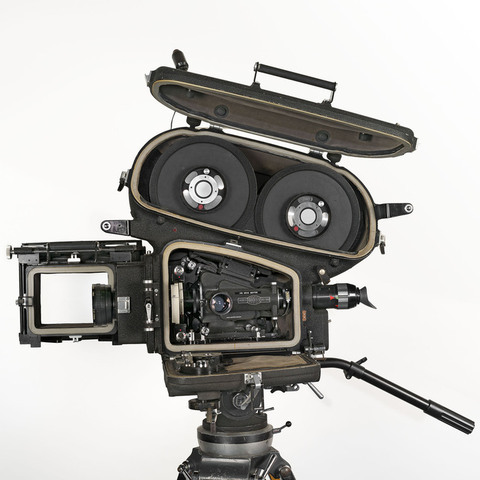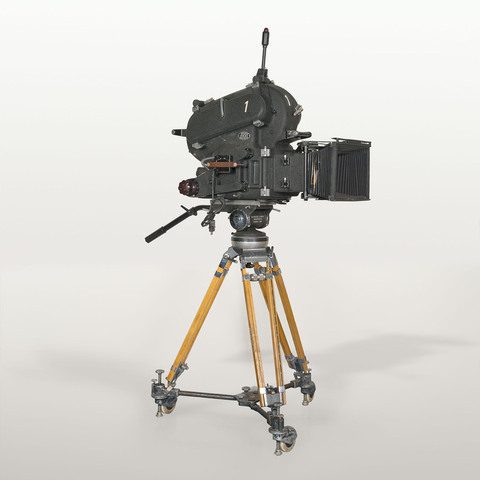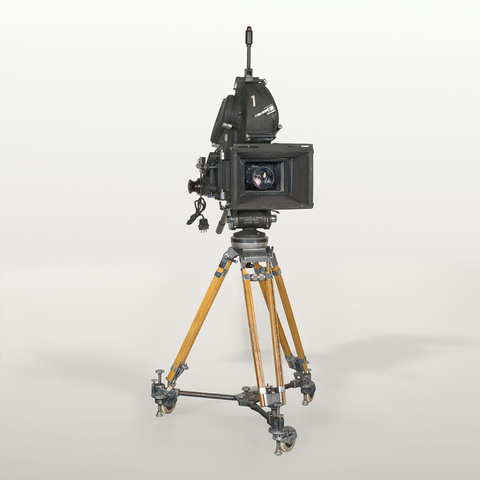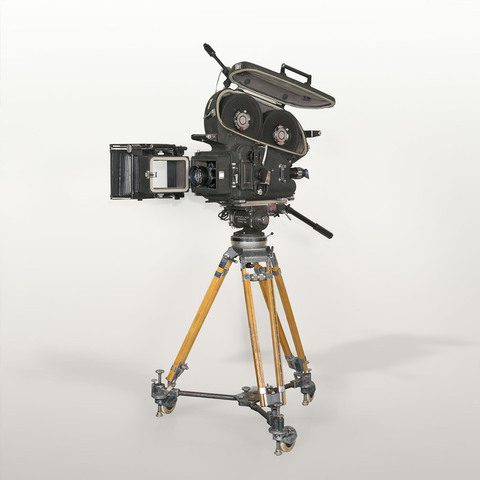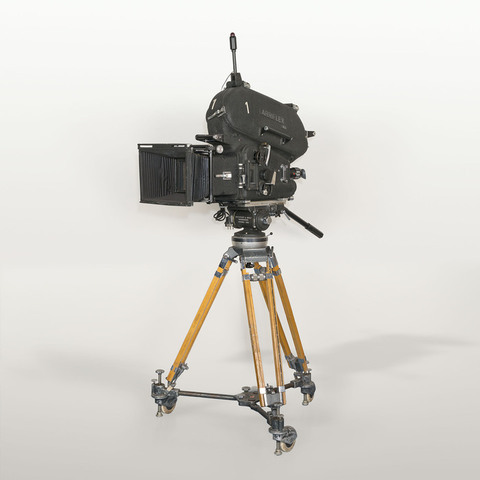Caméra film 35 mm
Fiche détaillée
Type de l'appareil
entraînement du film 35 mm à 25 images/seconde par une griffe latérale ; système de visée réflex électronique Video Arriflex 35/300 ; blimp 300 à quatre portes ; magasin débiteur et récepteur pour film 35 mm 120 m. avec moteur d'entraînement ; moteur à vitesse variable et courant continu ; tachymètre ; compendium ; trépied en bois et métal Sachtler & Wolf Mannheim hydro 300 avec plate-forme mobile
Auteurs
Informations non disponibles
Fabricants
Sachtler & Wolf
Mannheim
Arnold et Richter Arriflex
Munich, Türkenstrasse 89
Etablissements Pierre Angénieux
Saint-Héand
Utilisateurs
Informations non disponibles
Distributeurs
Arnold et Richter Arriflex
Munich, Türkenstrasse 89
Sujet du modèle
Informations non disponibles
Objectif
Angénieux zoom P. Angénieux Paris F. 25-250 mm 1 : 3.2 Type 10 x 25 B n° 1 181 427
Taille de l'objet
Ouvert :
Longueur : 132 cm
Largeur : 103 cm
Hauteur : 214 cm
Fermé :
Longueur : 110 cm
Largeur : 50 cm
Hauteur : 90 cm
Diamètre :
Informations non disponibles
Taille de la boîte de transport
Informations non disponibles
Remarques
Marques : "Arriflex 300 Arri" ; "Video Arriflex 35/300".
"Le procédé Electronic Cam est un système qui permet l'enregistrement sans interruption des différentes séquences sur film 35 mm (image et son) selon les méthodes de travail généralement employées pour le tournage en télévision, soit en direct, soit sur magnétoscope. Ce système donne une grande sécurité au réalisateur qui peut, lorsqu'il juge une scène mauvaise, la recommencer totalement ou en partie" (La Technique cinématographique, n° 266, septembre 1965, p. 42).
"The compact and popular Arriflex 35 mm camera, until now considered chiefly a hand-held camera, becomes a full-fledged production camera for sound stage or location use with addition of the new Arri Blimp and 1000-feet magazine. Like its smaller brother, the 400-feet blimp introduced earlier, the 1000-feet model is designed to accept any recent model 35 mm Arriflex, and it requires but a few minutes to convert this camera to a production camera and vice versa. To combine the Arriflex 35 with the 1000-feet blimp, the regular DC handgrip motor is removed and replaced by the standard Arri synchronous motor. The combined unit is then placed inside the blimp where it rests on rubber blocks provided for sound insulation. The Arri 35 thousand-feet blimp is designed to accept the standard 1000-feet Mitchell or Newall film magazine. For this a special adapter is first mounted on the magazine before it is attached to the camera. [...] An important innovation provides for the magazine to virtually carry its own weight ; while it is placed on the camera like any standard Arriflex magazine, it does not rest directly on the camera but instead on rubber buffers extending out from the interior blimp walls. The two sprockets of the magazine adapter are driven by the camera, while the magazine take-up spindle is driven by a separate torque motor which is located inside the blimp and connected to the magazine by a belt. The through-the-lens focusing and viewing feature of the Arriflex 35 is, of course, retained and functions with the blimp in place. The regular camera door with finder optics is replaced with a special door and the blimp has its own optical system which connects to the camera. The magnifying eyepiece on the rear of the blimp is fitted with a flexible rubber eyecup and foam-plastic cushion which affords comfortable viewing. A feature is that the eyecup can be easily washed, providing a measure of sanitation where camera is used alternately by a number of persons. When the blimp is used with the Arriflex 35, both focusing and exposure adjustments may be controlled externally. A large knob located on the front left of the blimp actuates the lens diaphragm. Three different knobs are provided for focusing - one each on the front left and right side of blimp, and one at rear of blimp. These handy controls enable the camera operator to accomplish follow focus, when desired, unaided by an assistant - thanks to the continuous through-the-lens viewing feature. [...] The Arri 1000-feet blimp is probably the only one which provides access to camera ; in addition to the front part, which swings open on its hinge, three additional doors are provided : the main side door permits mounting camera within the blimp along with the sync motor, and facilitates threading film. The large door on top affords access to the film magazine, permits its insertion or removal. Pneumatic hinges prevent this door from slamming shut accidentally. The third or rear door affords access to interior for connecting torque motor drive belt to magazine. In designing the blimp, Arri engineers employed the newest developments in acoustical engineering. The housing is die-cast of magnesium alloy. This is lined with ten alternating layers of sound absorbing materials consisting of goat skin, foam plastic and sheet lead. Over this is a finishing cover of grey cordury fabric. Sponge rubber is employed throughout for damping sound or providing insulation. Heavy rubber gaskets surround the edges of all doors and doorways. [...] Result is almost 100 % suppression of camera noise" (Notice Arri Blimp 300 for Arriflex 35 with 300 meter (1000 ft.) magazine, München, Arnold & Richter, s.d.).
Bibliographie
La Technique cinématographique, n° 266, septembre 1965, p. 42-43.
Notice Arri Blimp 300 for Arriflex 35 with 300 meter (1000 ft.) magazine, München, Arnold & Richter, s.d.
